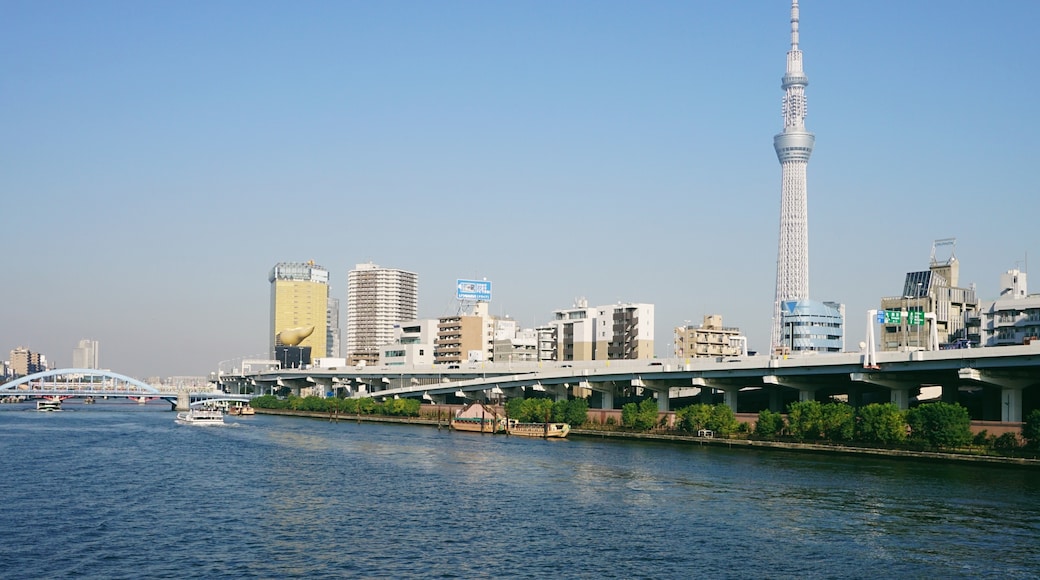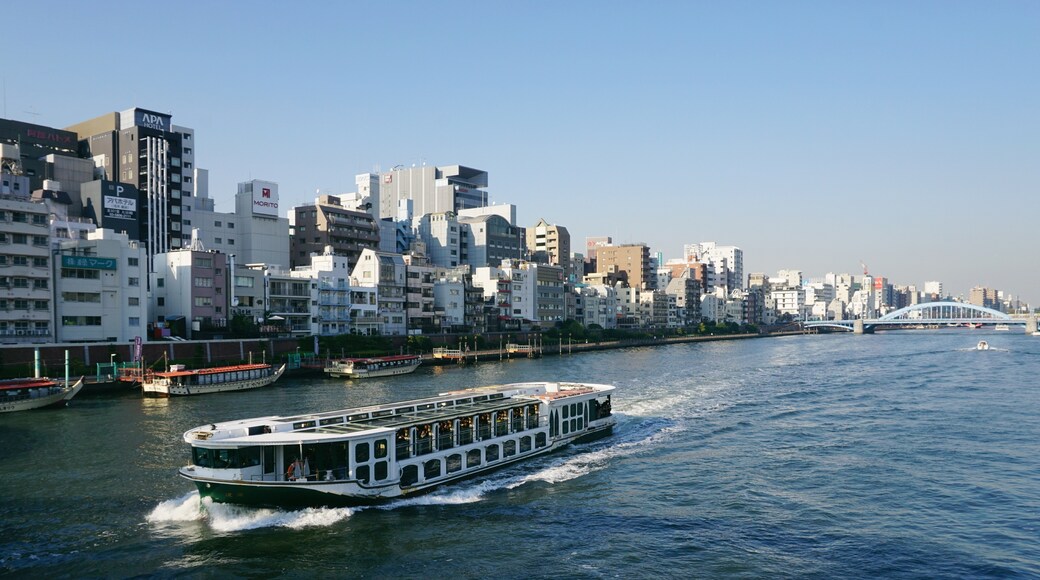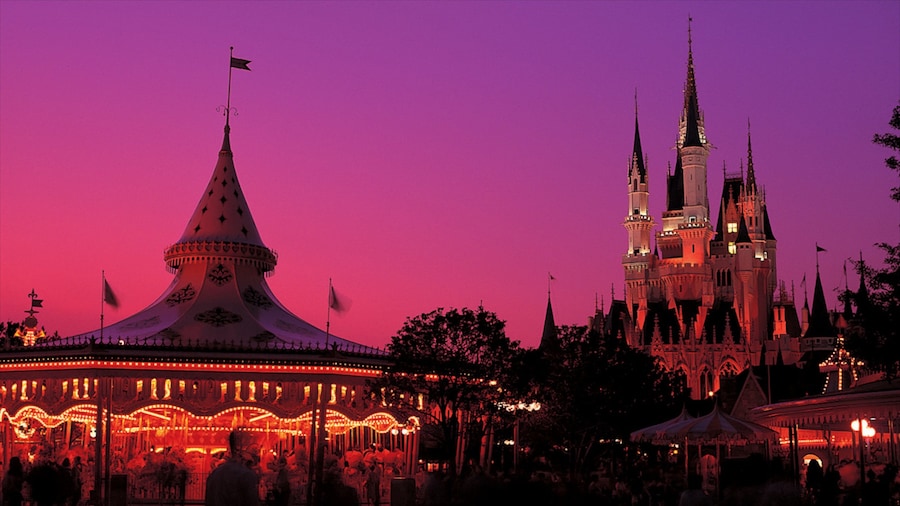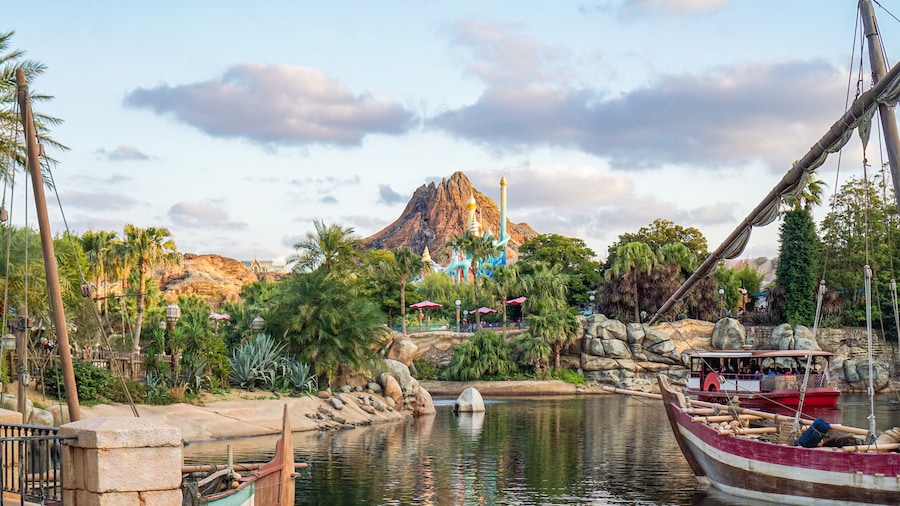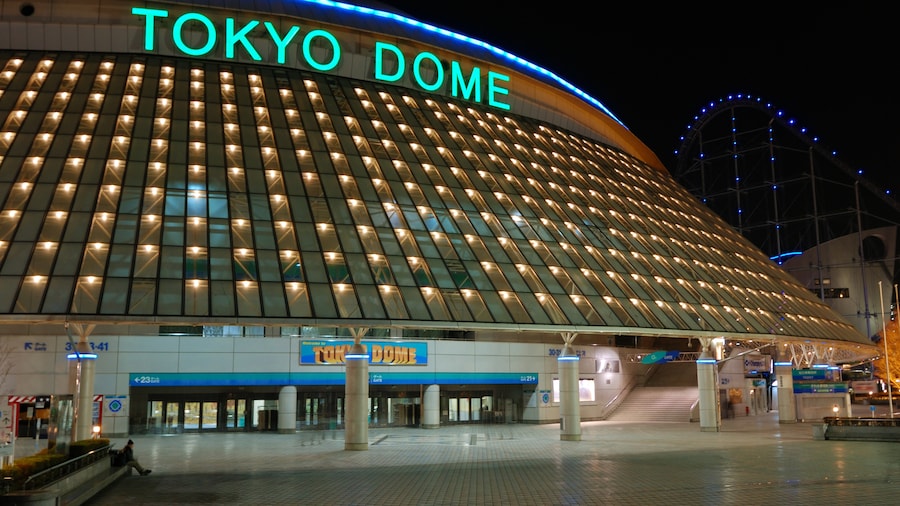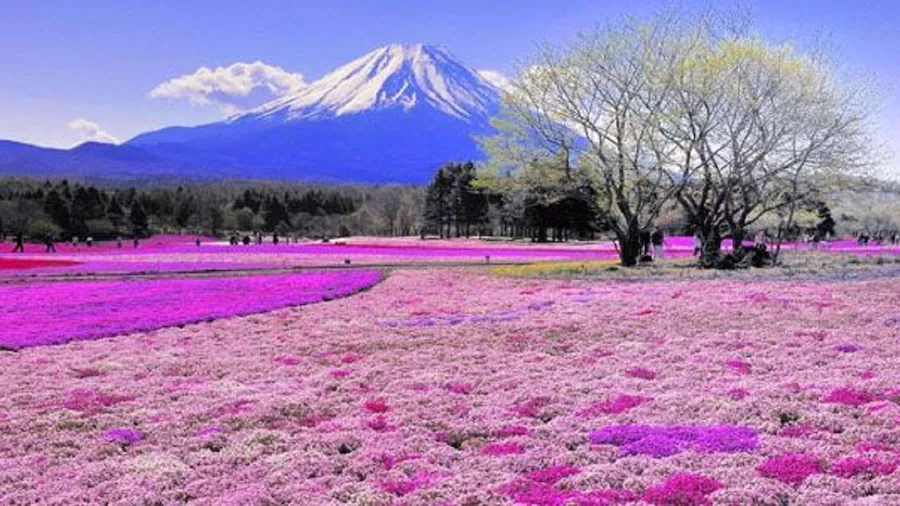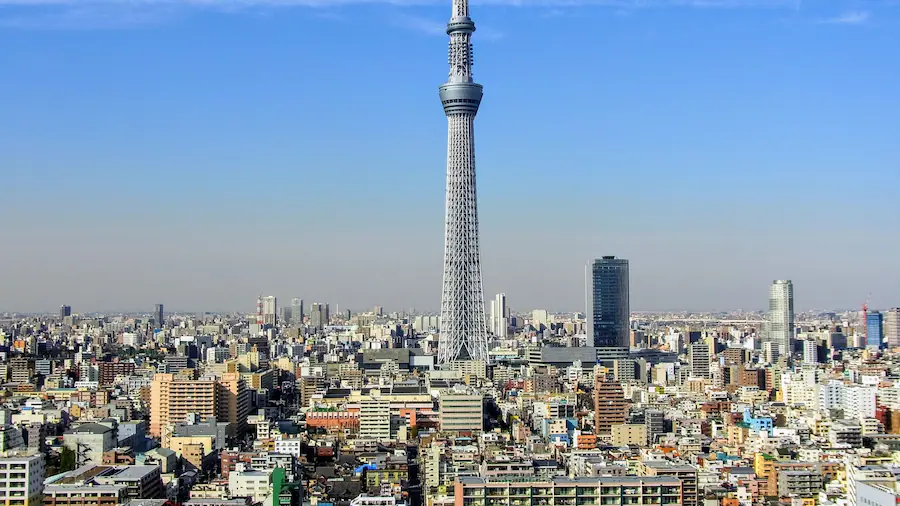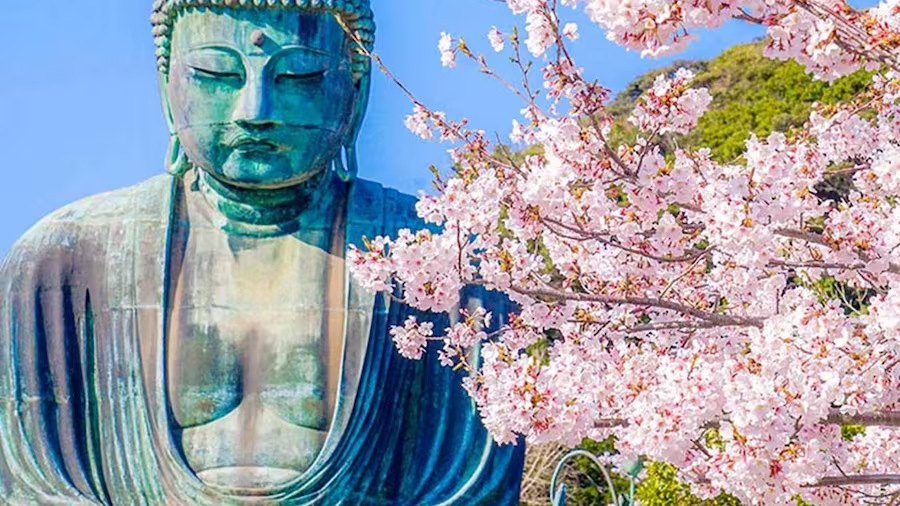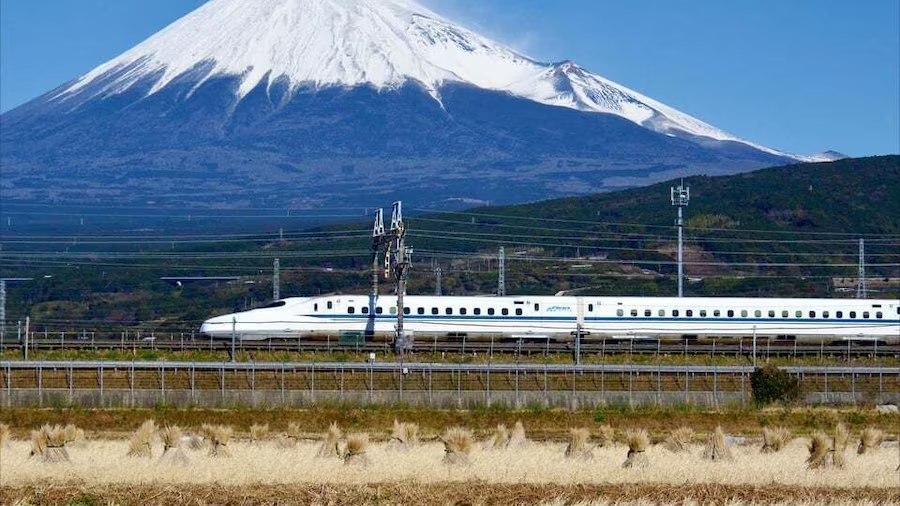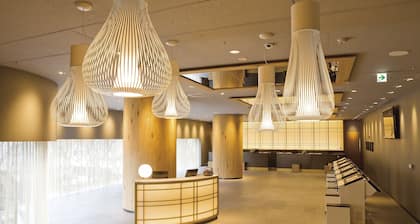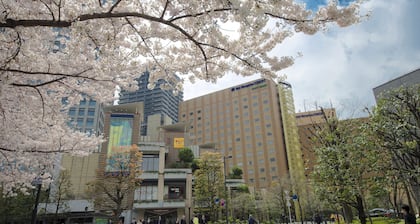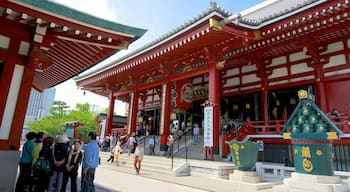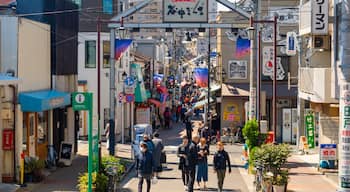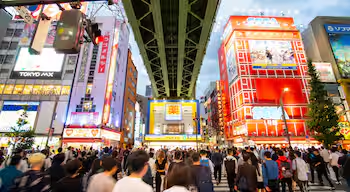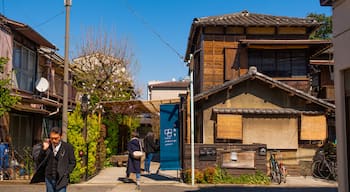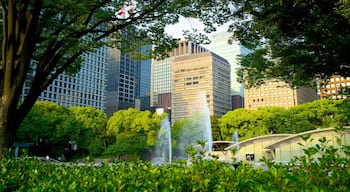The unofficial “Komagata area” refers to the streets and riverbanks around the iconic blue Komagata Bridge. The bridge, called Komagatabashi in Japanese, spans the Sumida River and has been here since the 1920s.
This riverside area near the busy Edo-dori Avenue, in the ward of Taitō, is known for its cheaper hotels and guesthouses hidden in narrow alleys. Some have restaurants or rooftop terraces with views of the Komagata Bridge, the Tokyo Skytree and the Sumida River. The river is crossed by 26 bridges, each just over half a mile (1 kilometer) apart.
Walk to the little viewing platform on Komagata Bridge to photograph the river with the Tokyo Skytree in the background. This 2,080-feet (634-meter) tall broadcasting tower with observation deck and restaurant sure stands out.
Look down to see the amazing array of watercraft cruising the river. Traditional-looking river boats cross paths with ultra-modern ferries resembling silver bullets. Some are part of the yakatabune, scenic dining cruises for tourists.
Your eyes will also be drawn to the golden, flame-like shape on the “Super Dry Hall” of Japan’s world-famous Asahi Beer. The striking artwork belongs to the Azumabashi headquarters of the brand and represents “the passionate heart” of the brewing company.
If you are passionate about beer too, head to the first floor to browse the display about the history of Asahi Beer. There are bars and restaurants in the building too, so you can try the golden liquid in its home base. Order some fried and steamed Japanese snacks by pointing at the pictures on the menu.The nearest bridge here is Azumabashi, not far from Asakusa Station. Ask around to find an iconic local restaurant, named Komagata Dozeu, that is over 200 years old. They specialize in dojō, a small fresh-water fish. Try the dojō-nabe (loach hotpot) cooked on charcoal stoves by your table, just like it was done during the Edo Era.
If you find the restaurant closed, stroll back along the riverbank towards the Umaya bridge to find other stylish restaurants or humble sushi shops. From this end, you can catch the metro at Kuramae Station to explore other stops along the Ōedo line.



